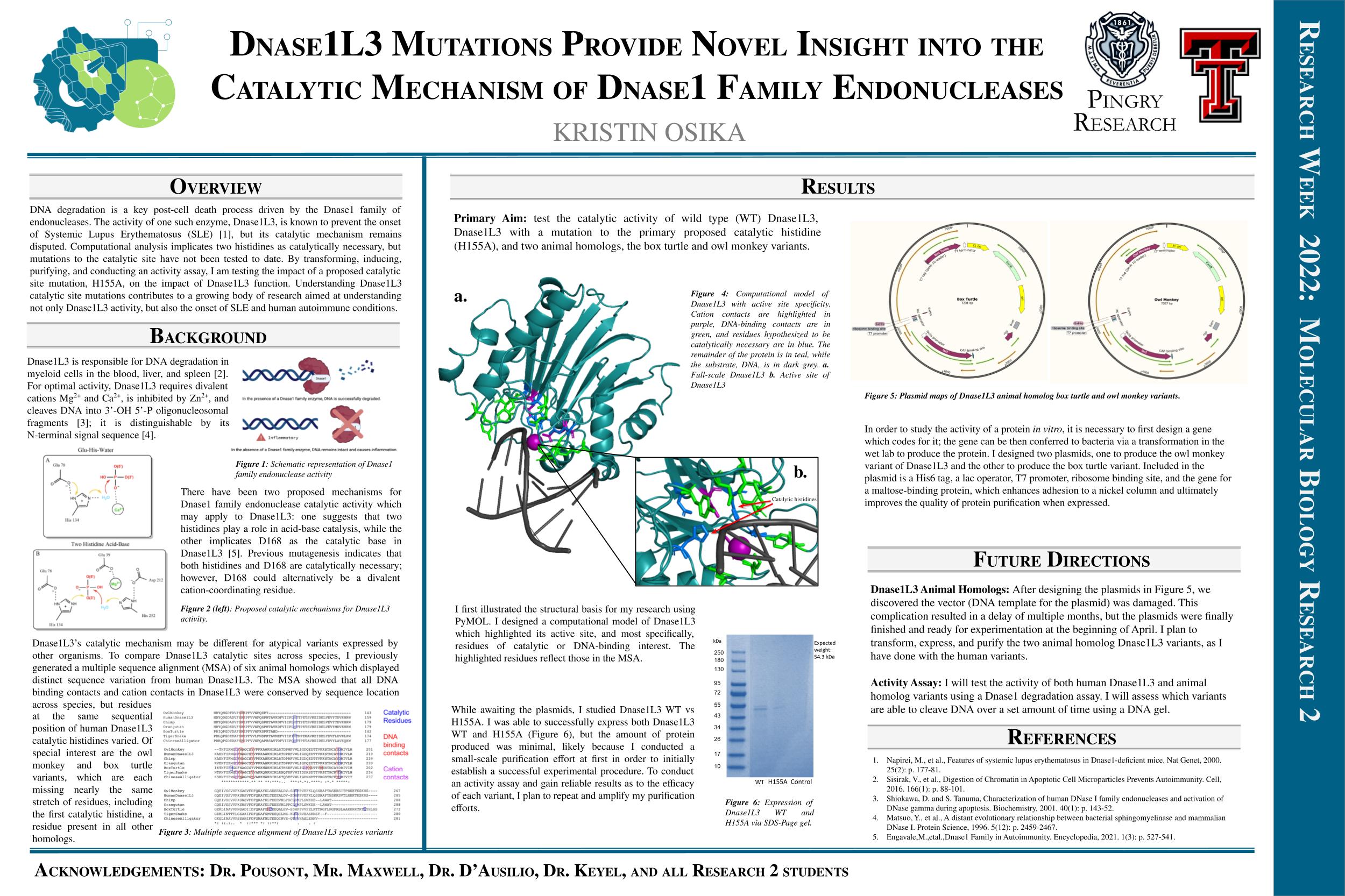DNASE1L3 2022-2023 Project – A Mutation that Provides Novel Insight into the Catalytic Mechanism of DNASE1 Family Endonucleases
Mirika Jambudi (Form VI), Lauren Kim (Form VI), Kate Marine (Form V)
Project Summary + Project Goal
DNA degradation is a key post-cell death process driven by the Dnase1 family of endonucleases. The activity of one such enzyme, Dnase1L3, is known to prevent the onset of Systemic Lupus Erythematosus (SLE), but its catalytic mechanism remains disputed. Computational analysis implicates two histidines as catalytically necessary, but an in vitro comparison of the activity of proteins possessing and lacking these histidines has not been conducted to date.
Current State
This project is new this year and was piloted by a Pingry senior last year. This year, we will reproduce their results and build from there.
Next Steps
In the upcoming year, we are going to develop a preliminary assay to test the enzymatic activity of PETase. This assay may include either a plate-clearing assay using E. coli cells or an in-vitro hydrolase assay. By establishing the baseline of enzymatic activity for our variants of PETase, we will be able to compare their activity to future PETase variants. Through transforming, inducing, purifying, and conducting activity assays, our project aims to compare the catalytic activity of Dnase1L3 animal homologs (owl monkey and box turtle) with human Dnase1L3.
Research Week Poster

References
Napirei, M., et al., Features of systemic lupus erythematosus in Dnase1-deficient mice. Nat Genet, 2000. 25(2): p. 177-81.
Sisirak, V., et al., Digestion of Chromatin in Apoptotic Cell Microparticles Prevents Autoimmunity. Cell, 2016. 166(1): p. 88-101.
Shiokawa, D. and S. Tanuma, Characterization of human DNase I family endonucleases and activation of DNase gamma during apoptosis. Biochemistry, 2001. 40(1): p. 143-52.
Matsuo, Y., et al., A distant evolutionary relationship between bacterial sphingomyelinase and mammalian DNase I. Protein Science, 1996. 5(12): p. 2459-2467.
Engavale,M.,etal.,Dnase1 Family in Autoimmunity. Encyclopedia, 2021. 1(3): p. 527-541. Liu, Q.Y., et al., DNaseY: a rat DNaseI-like gene coding for a constitutively expressed chromatin-bound endonuclease. Biochemistry, 1998. 37(28): p. 10134-43.
McCord, J.J., Engavale, M., Masoumzadeh, E. et al. Structural features of Dnase1L3 responsible for serum antigen clearance. Commun Biol 5, 825 (2022).
Meet the Team



Lauren Kim
Kate Marine
Mirika Jambudi

